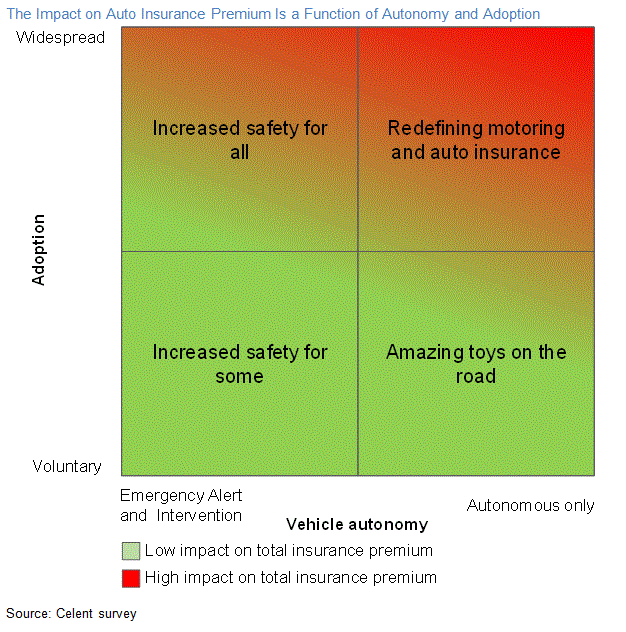Insurers Beware: Speedbumps on the Road to Autonomous Vehicles
What Happens When Cars Have Two Drivers
Abstract
Since the creation of the automobile, the single truth has always been that the driver is required to be in control of the car. Many Western countries are entering a time of shared responsibility for the activity of driving, where the car may drive itself some of the time. This era will bring new risks that insurers must track if they are to respond appropriately and do what is best for the insured, as well as for their shareholders and members.

In Europe, the highest safety awards from the EuroNCAP will now be reserved for vehicles that can brake on their owner’s behalf rather than collide with an obstacle in front of them, among other technologies. Similarly, in the United States the National Highway Traffic Safety Administration (NHTSA) will identify vehicles with advanced features as safer than their counterparts. Cars that interfere with driving are already here, but are today’s drivers ready?
Advanced safety technology and self-driving cars are set to change the automotive industry forever. While most eyes are on the risks to the industry of robot cars, we are entering a transitional period where experimental driving technology will be in control of vehicles on today’s roads. Celent predicts the overall effect will be to reduce both the severity and frequency of accidents, but adoption of these new safety features could increase less severe accidents and related repair costs.

Celent has already predicted the end of auto insurance, and an upcoming report will review this topic again in 2015.
“Before ‘carmageddon,’ society will experience a time of continued innovation and testing in car technology that may last decades,” says Craig Beattie, a senior analyst with Celent’s Insurance practice and author of the report. “Insurers who choose to continue to offer auto or car insurance will need to navigate this era carefully in order to remain profitable and to offer a good service to their customers.”
Celent identifies the new hazards and some scenarios related to the adoption of robot cars on today’s roads. Celent goes on to identify the milestones in this adoption and outline the issues each could present the insurance industry and how they should respond.

